In artwork circles, spirituality is coming out of closet as curators and critics rethink the affect of faith on artists from Robert Smithson to Andy Warhol. But spirituality’s cousins, spiritualism and the occult, continue being cloaked with suspicion. There is now, as there lengthy has been, an aura of disrepute around these techniques: they reek of charlatanism, crackpot science, and New Age gullibility. A couple yrs ago, when I was producing an post on art and spirituality, I was warned by a well known author on the subject to stay away from the word spiritualism. And in fact, when significant artwork museums contact on the matter of spiritualism or the occult, it is commonly to debunk or satirize. The 2018 Hilma af Klint exhibition at the Guggenheim was the exceptional exception, but even there the curators seemed discomfited by the artist’s insistence that her is effective really should be noticed as messages from her spirit guides.
Two exhibitions at present on watch just take spiritualism and the occult severely, examining not only performs designed by artists in contact with other realities, but also the way that these explorations are woven into the material of American artwork and culture. Equally exhibitions have comprehensive, nicely-researched catalogues that make their scenarios even to those people of us unable or unwilling to journey in the time of Covid, and are properly well worth partaking with.
Initially some definitions: Whilst spirituality has advanced into an all-intent time period encompassing myriad anti-materialistic techniques to art, spiritualism has a particular indicating. It flowered in the 19th century as a religious motion aimed at proving the immortality of the soul by creating communication with spirits of the dead. The occult encompasses a wider group of practices, spiritualism amid them, dependent on the perception that mystery or hidden expertise can give accessibility to otherworldly or magical energies.
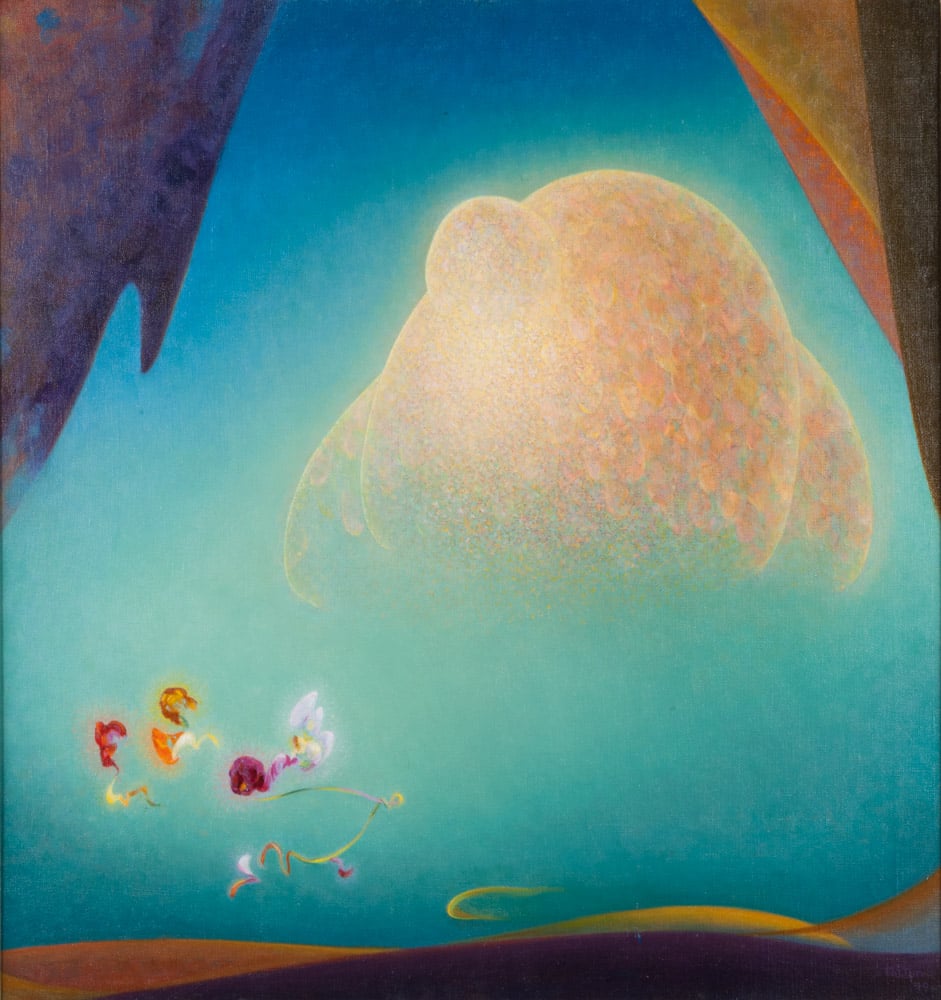
Agnes Pelton, Nurture (1940). Collection of the Nora Eccles Harrison Museum of Art, Utah Point out College, reward of the Marie Eccles Caine Basis.
Transcendental Portray
“Yet another Entire world,” which opened in October at the Philbrook Museum in Tulsa, Oklahoma, resuscitates the Transcendental Portray Group, a Southwest-dependent collective that emerged in 1930s New Mexico. As just one of its adherents discussed, its members were being searching for “a richer and deeper land—the globe of peace—love and human relations projected as a result of pure kind.”
These artists drew heavily on the occult philosophy of Theosophy and explored these types of phenomena as synesthesia, vibration, sacred geometry, and cosmic images in their quest to attain a transcendent state of consciousness. As curator Michael Duncan describes, they adopted the name Transcendental, not from Emerson’s fusion of character and the divine, but from the quest to find out the interior religious depths inside of just about every artist.
Right now the finest-recognized member of TPG is Agnes Pelton, the issue of a dazzling 2020 exhibition at the Whitney Museum. The other people are just about not known exterior New Mexico, the place all but the Southern California-based mostly Pelton lived. TPG existed as a team for only a few many years ahead of currently being disrupted by the introduction of the Second Planet War. But the artists ongoing to do the job independently for decades right after.
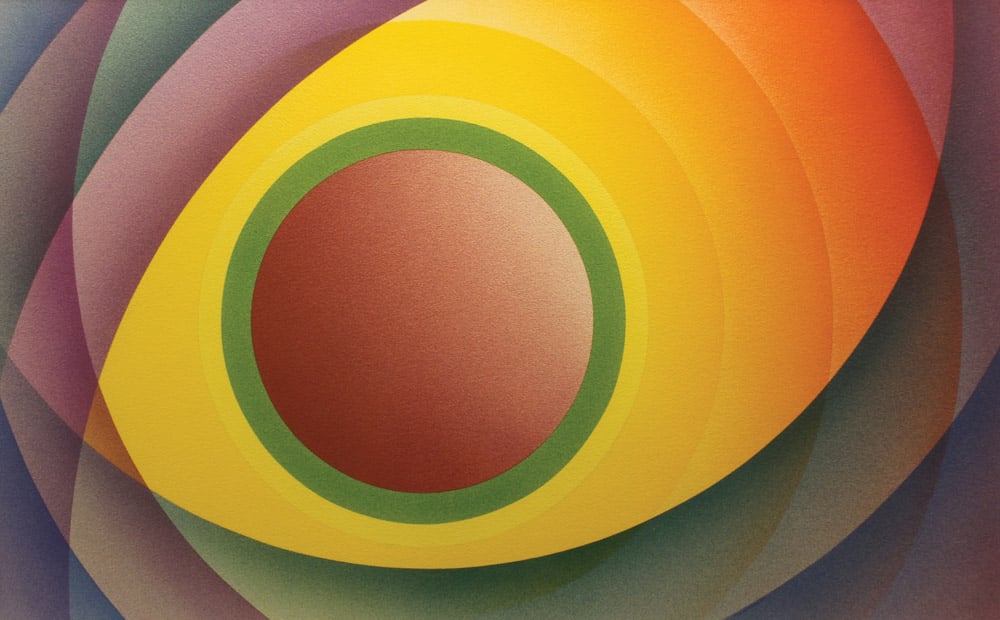
Raymond Jonson, Casein Tempera No. 1 (1939).
Albuquerque Museum, present of Rose Silva and Evelyn Gutierrez.
Stylistically, they present various methods to transcendence, ranging from the crisp, precisionist geometry of Raymond Jonson and the practically-landscapes of Lawren Harris to the Zen-inspired improvisations of William Lumpkins and the gentle biomorphism of Florence Miller Pierce.
Duncan argues that TPG’s invisibility is a result of “the double downside of remaining an brazenly non secular motion from the erroneous side of the Mississippi.” Until finally just lately, artwork historians have revealed terrific reluctance to accept the overwhelming evidence of the influence of occult concepts on the progress of modernism. As the canon splinters, the paintings in “Another World” open up up new avenues for knowing the evolution of American abstraction, particularly as it took location outside the big centers of the mid-century American artwork globe.
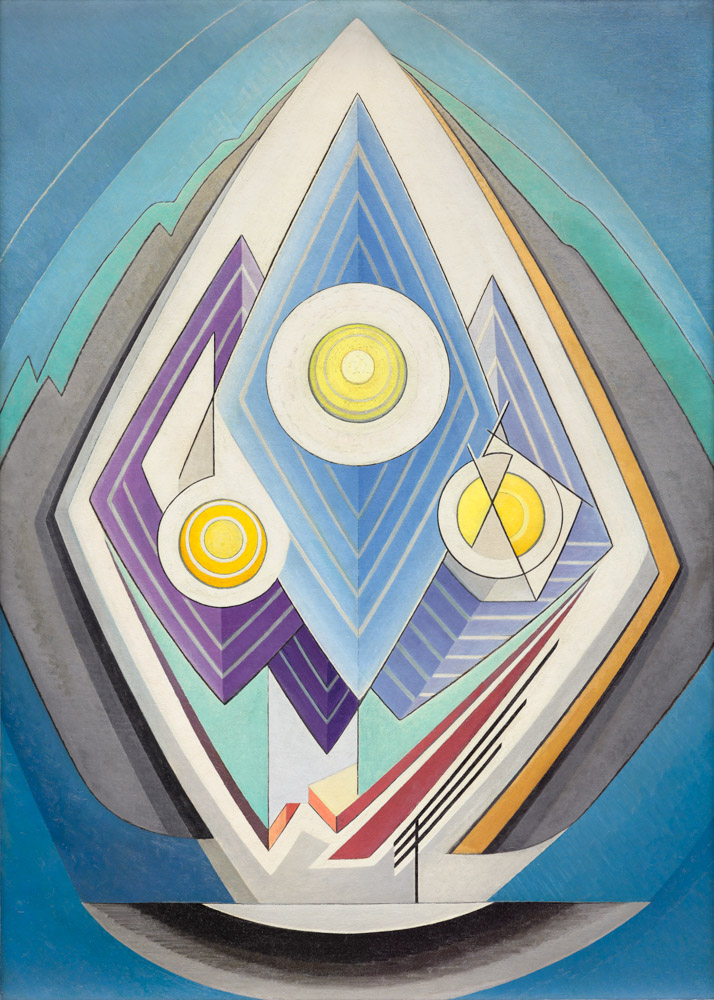
Lawren Harris,
Painting No. 4 (ca. 1939). Assortment of the Artwork Gallery of Ontario, Toronto.
Paranormal Artwork Heritage
Whilst TPG’s rhetoric of internal Godhood and the archaic Unconscious may well still raise eyebrows, the functions in good shape comfortably in the artwork historic space at the moment remaining opened up by the big public response to the Hilma af Klint exhibit. “Supernatural The us: the Paranormal in American Art” presents a thornier challenge.
This exhibition—opening at the Minneapolis Institute of Art after travels to Toledo and Louisville—has been curated by the MIA’s Robert Cozzolino, who reviews that he individually has had other-worldly experiences. Fairly than the much easier-to-digest impact of occultism on abstraction, Cozzolino has selected to emphasize its manifestations as they take place in figurative artwork. He follows these via the complete swath of American historical past utilizing a definition of the paranormal that encompasses every little thing from séances and spirit pictures to mesmerism and UFOs.
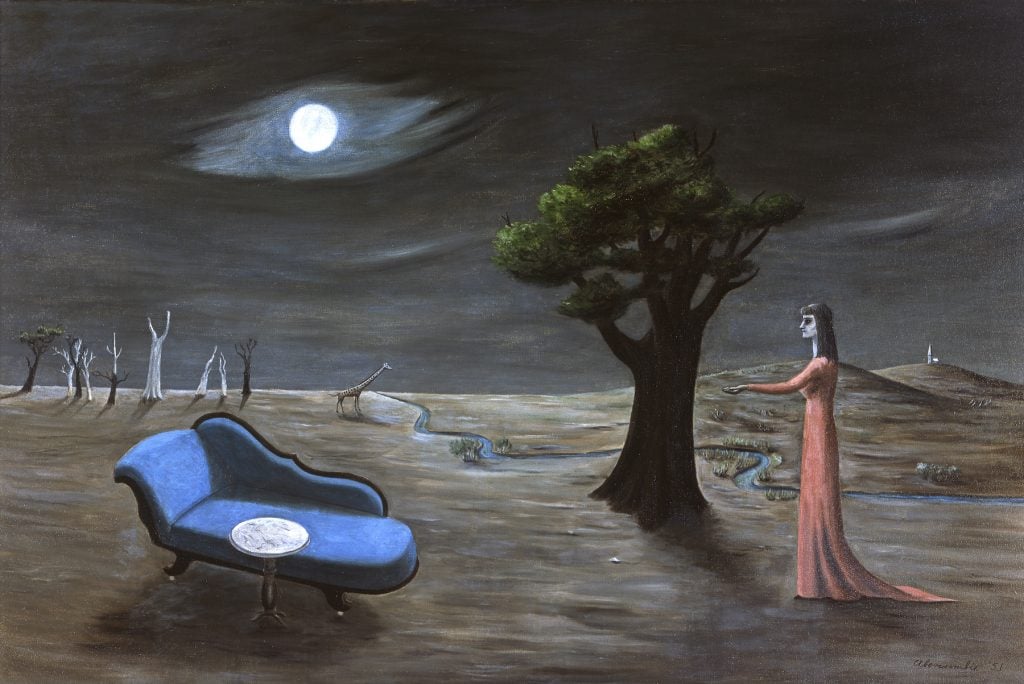
Gertrude Abercrombie, Search for Rest (1951). Collection of Sandra and Bram Dijkstra. Photo: Sandy and Bram Dijkstra.
As set out in the catalogue, the historic report includes some fascinating scenario scientific studies. For occasion, there is the story of Gertrude Abercrombie, painter and self-described witch whose will work represent herself as an elongated figure who levitates, drifts via sparse landscapes, or consorts with her animal “familiars” in spooky domestic interiors. An basically unschooled artist who was an aficionado of the prewar Chicago jazz scene, Abercrombie created eerie performs that seem to be born of a rebel in opposition to the strictures of traditional relationship and motherhood.
Representing a different form of riot, we meet up with the tasteful Girl Campbell, a British aristocrat, cross-dresser, actress, and spiritualist. She served as inspiration for a single of Whistler’s most ethereal paintings, a illustration of a woman’s encounter and palms rising mysteriously from an enveloping darkness, which was lauded as a spiritualist icon. The MIA show also introduces Wilson Bentley whose obsessive images of vanishing snowflakes are seen in this article as part of a submit-Civil War hangover, with the ephemeral crystals offering a metaphor for the flickering essence of the souls of fallen soldiers.
Contemporary Encounters
When it comes to present-day art, the exhibition casts a broad web. A number of artists choose inspiration from historical manifestations of the occult. The late Jeremy Blake’s 2002 online video Winchester is an impressionistic tour of the ghost haunted Winchester mansion in San Jose California that was dwelling to the eccentric widow of the Winchester Repeating Arms Enterprise. Rachel Rose’s Wil-o-Wisp evokes the everyday living of 17th century mystic Elspeth Blake who was persecuted for her apply of magic and therapeutic.
But in particular interesting are performs by artists who themselves have had occult experiences. Cozzolino’s introductory essay opens with a dialogue of a established of early is effective by painter Jack Whitten. These comprised spectral illustrations or photos that the artist felt experienced emerged unbidden from early recollections of ghost stories encompassing a lynching in his father’s Mississippi hometown. The is effective are not reproduced in the catalogue, Cozzolino notes, simply because Whitten’s gallery does not want his work connected with spiritualism. But as described, they would appear to be to bear a hanging resemblance to late 19th-century follow of believed photography which purported to present information of their subject’s assumed as transmitted by vitality waves immediately from the mind.
Cozzolino estimates a assertion by Whitten: “I LIKE THE Notion OF Portray AS Object Made use of TO SEDUCE SPIRIT.” And, without a doubt, the exhibition as a whole implies a connection in between African American people expertise, African spiritual practices, and the profound sympathy for the supernatural identified in the function of numerous African American artists.
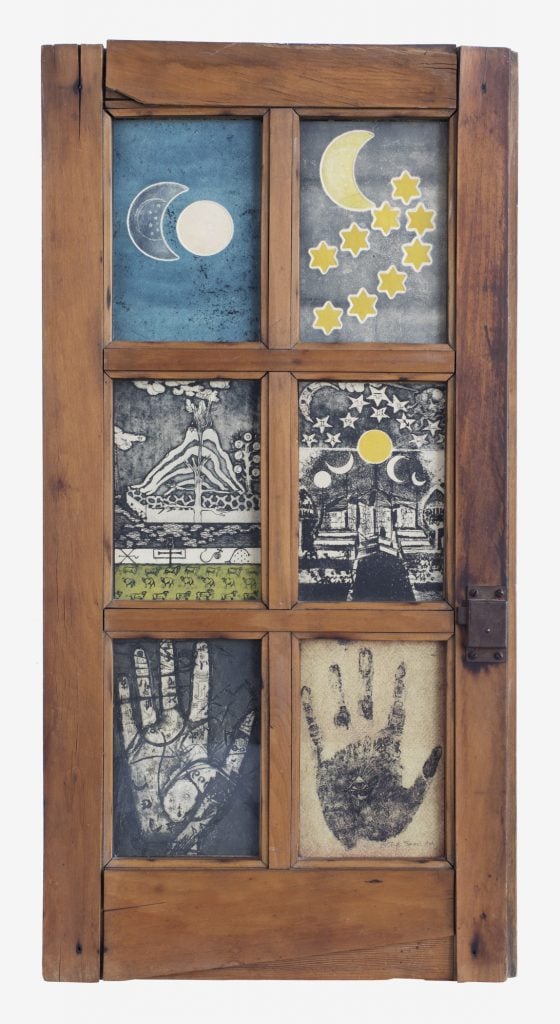
Betye Saar, The Watch from the Sorcerer’s Window (1966). Selection of halley k harrisburg and Michael D. Rosenfeld. Picture: Courtesy of Michael Rosenfeld Gallery LLC, New York, NY. Courtesy the Artist and Roberts Projects, Los Angeles, CA. © Betye Saar.
Some instances in level: Howardina Pindell evokes the spirit-haunted Middle Passage where by so many captives perished on their way to slavery, though Ellen Gallagher imagines the legendary land of Drexciya mentioned to be populated by aquatic beings born from the expecting gals thrown overboard from slave ships. Whitfield Lovell’s Visitation: The Richmond Job conjures the ghosts of the citizens of write-up-Civil War America’s first effective Black entrepreneurial community. Is effective by Betye and Allison Saar discover the tradition of “conjur ladies,” those herbalists and healers in rural southern communities who are explained to targeted traffic in both of those black and white magic. The catalogue of “Supernatural America” also provides substantial room to Renee Stout’s The Rootworker’s Worktable, an installation that offers the artist’s version of 1 these herbalist’s tools for attaining accessibility to the religious globe.
Modern African American artists are not by yourself in their openness to the occult. “Supernatural America” helps make a stage of presenting works from groups often marginalized by mainstream American culture, among the them Native Individuals, self taught and outsider artists, UFO abductees, psychics, and witches. In this vein, it also delivers a mystical context for is effective by feminist artists like Carolee Schneemann, Mary Beth Edelson, and Ana Mendieta. An essay on their practices indicates that feminist art history shares the culture’s standard squeamishness about non secular matters, major it to downplay the remarkable desire shown by ‘70s feminists in ritual, Terrific Goddess archetypes, and the sacred feminine.

Renée Stout,
The Politics of the Occult
The selections in “Supernatural America” emphasize progressive aspects of the occult impulse. This is in keeping with the historical record. In the 19th century, spiritualism, in particular, belonged to a constellation of interests that included abolition, women’s rights, socialism, temperance, and other social reforms.
William Lloyd Garrison, publisher of The Liberator, the foremost abolitionist newspaper, was an avid Spiritualist. Mary Todd Lincoln conducted séances in the White House. In their monumental History of Woman Suffrage, pioneering feminists Susan B. Anthony and Elizabeth Cady Stanton declared, “The only religious sect in the world… that has recognized the equality of women is the Spiritualists.” Historian Ann Braude argues that spiritualists and social reformers shared a radical individualism based on resistance to hierarchies and enforced orthodoxies. She maintains, “The religious anarchism of spiritualism provided a positive religious expression that harmonized with the extreme individualism of radical reform.”
However, Braude notes that contemporary narratives of the struggle for women’s rights have largely erased the spiritualists’ contribution. The same is true for accounts of abolition. The suppression of these histories have contributed to the occult’s bad odor—especially at a time when skepticism and individualism have taken a reactionary turn, manifesting themselves in the anti-vax movement and the proliferation of conspiracy theories around the belief that Bill Gates plans to insert micro chips into our brains.
Indeed, you could say that the decoupling of spiritualism and the occult from the history of progressive ideas mirrors their decoupling from the history of art. But as the utopian dreams of groups like TPG and the individualistic quests of the outsiders in “Supernatural America” demonstrate, the occult is deeply entwined with American art and identity.
It is often said that belief in mysticism, occult energies, and immaterial realities grows stronger in times of trauma. It is easy today to scoff at the obvious fraudulence of some 19th century spirit manifestations. But during that time of social, political, and philosophical upheaval, there was a widespread tendency to spiritualize such emerging technologies as the photograph, the telegraph, and electromagnetism. Today, many of our own emerging sciences, from Artificial Intelligence to the study of dark matter to the renewed attention to the therapeutic properties of psilocybin, again demonstrate that the line between science and “pseudo science” can be difficult to draw.
In times of multiple crises, settled certainties become undone. “Another World” and “Supernatural America” suggest how artists can help us look beyond the world we only think we know.
Follow Artnet News on Facebook:
Want to stay ahead of the art world? Subscribe to our newsletter to get the breaking news, eye-opening interviews, and incisive critical takes that drive the conversation forward.









More Stories
Learning Lines with Line Stations
Ep 120 The AHA Moments we Experience as Artists
Wyatt Kahn “Knots & Figures” at Galerie Eva Presenhuber, Vienna